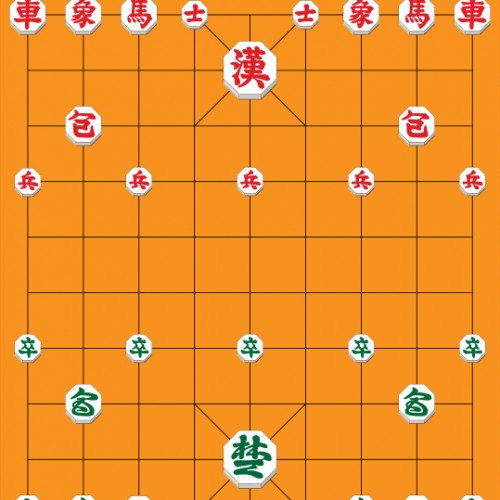BLOCKADE VS JANGGI

BLOCKADE
Blockade (also known as Cul-de-sac) is a strategy board game for two players with the motto "beat the barrier". It's played on a board with an 11x14 grid of spaces, barriers and 2 mobile playing pieces per player. The object of the game is to maneuver ones pieces around barriers and into the opponents starting spaces. The game is long out of production. Blockade was created by Philip Slater in 1975. In United States, it was published by Lakeside under the name Blockade. In France, Germany, Sweden, and United Kingdom the game was published by Lazy Days under the name Cul-de-sac (French, translation dead-end). The rules are simple, but it provides an interesting and deep game. Each player are given 2 pawns, 9 green walls (placed vertically), and 9 blue walls (placed horizontally). Pawns are placed on their starting locations on each of the four corners of the 11×14 board. First players' starting location is at [4,4] and [8,4], and the second players' is at [4,11] and [8,11]. The object of the game is for each player to get both their pawns to the starting locations of their opponent. The first to do so wins. On each turn, a player moves one pawn one or two spaces (horizontally, vertically, or any combination of the two) and places one wall anywhere on the board (useful for blocking off their opponent's move). Walls always cover two squares and must be placed according to their color (vertically or horizontally). Pawns may jump over other pawns that are blocking their path. Once players are out of walls, they keep moving pawns until one wins.
Statistics for this Xoptio

JANGGI
Janggi (including romanizations changgi and jangki), sometimes called Korean chess, is a strategy board game popular in Korea. The game was derived from xiangqi (Chinese chess) of China and is very similar to it, including the starting position of the pieces, and the 9×10 gameboard, but without the xiangqi "river" dividing the board horizontally in the middle. Janggi is played on a board nine lines wide by ten lines long. The game is sometimes fast paced due to the jumping cannons and the long-range elephants, but professional games most often last over 150 moves and so are typically slower than those of Western chess. In 2009, the first world janggi tournament was held in Harbin, Heilongjiang China. The board is composed of 90 intersections of 9 vertical files and 10 horizontal rows. The board has nearly the same layout as that used in xiangqi, except the janggi board has no "river" in the central row. The pieces consist of disks marked with identifying characters and are placed on the line intersections (as in xiangqi and Go in China). Janggi pieces are traditionally octagonal in shape, and differ in size according to their rank. The sides are Blue (or sometimes Green), which moves first, versus Red. Each side has a palace that is 3 lines by 3 lines (9 positions) in the centre of their side of the board against the back edge. The palace contains four diagonal lines extending outwards from the centre, forming an "X" shape.